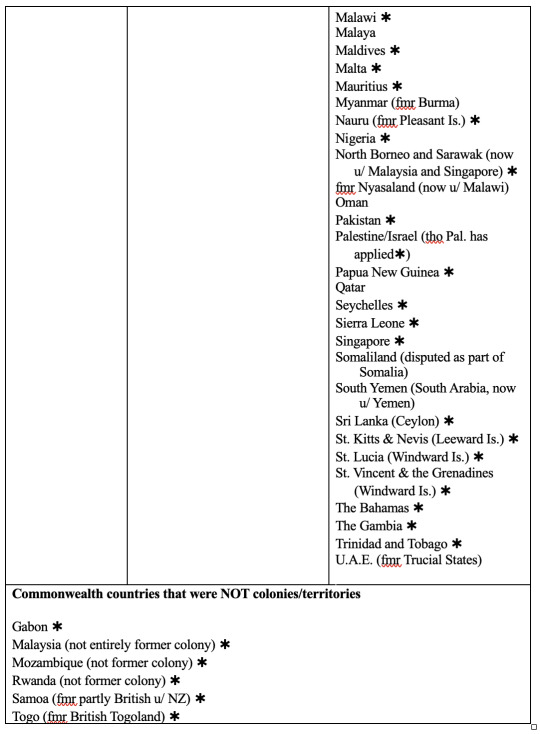#and colonizing territory
Explore tagged Tumblr posts
Text
Hundreds of Tibetans protesting against a Chinese dam were rounded up in a harsh crackdown earlier this year, with some beaten and seriously injured, the BBC has learnt from sources and verified footage.
Such protests are extremely rare in Tibet, which China has tightly controlled since it annexed the region in the 1950s. That they still happened highlights China's controversial push to build dams in what has long been a sensitive area.
Claims of the arrests and beatings began trickling out shortly after the events in February. In the following days authorities further tightened restrictions, making it difficult for anyone to verify the story, especially journalists who cannot freely travel to Tibet.
But the BBC has spent months tracking down Tibetan sources whose family and friends were detained and beaten. BBC Verify has also examined satellite imagery and verified leaked videos which show mass protests and monks begging the authorities for mercy.
The sources live outside of China and are not associated with activist groups. But they did not wish to be named for safety reasons.
In response to our queries, the Chinese embassy in the UK did not confirm nor deny the protests or the ensuing crackdown.
But it said: "China is a country governed by the rule of law, and strictly safeguards citizens' rights to lawfully express their concerns and provide opinions or suggestions."
The protests, followed by the crackdown, took place in a territory home to Tibetans in Sichuan province. For years, Chinese authorities have been planning to build the massive Gangtuo dam and hydropower plant, also known as Kamtok in Tibetan, in the valley straddling the Dege (Derge) and Jiangda (Jomda) counties.
Once built, the dam's reservoir would submerge an area that is culturally and religiously significant to Tibetans, and home to several villages and ancient monasteries containing sacred relics.
One of them, the 700-year-old Wangdui (Wontoe) Monastery, has particular historical value as its walls feature rare Buddhist murals.
The Gangtuo dam would also displace thousands of Tibetans. The BBC has seen what appears to be a public tender document for the relocation of 4,287 residents to make way for the dam.
The BBC contacted an official listed on the tender document as well as Huadian, the state-owned enterprise reportedly building the dam. Neither have responded.
Plans to build the dam were first approved in 2012, according to a United Nations special rapporteurs letter to the Chinese government. The letter, which is from July 2024, raised concerns about the dam's "irreversible impact" on thousands of people and the environment.
From the start, residents were not "consulted in a meaningful way" about the dam, according to the letter. For instance, they were given information that was inadequate and not in the Tibetan language.
They were also promised by the government that the project would only go ahead if 80% of them agreed to it, but "there is no evidence this consent was ever given," the letter goes on to say, adding that residents tried to raise concerns about the dam several times.
Chinese authorities, however, denied this in their response to the UN. "The relocation of the villages in question was carried out only after full consultation of the opinions of the local residents," the Permanent Mission of the People's Republic of China to the United Nations office said in a letter from September 2024.
It added: "Local government and project developers funded the construction of new homes and provided subsidies for grazing, herding and farming. As for any cultural relics, they were relocated in their entirety."
But the BBC understands from two Tibetan sources that, in February, officials had told them they would be evicted imminently, while giving them little information about resettlement options and compensation.
This triggered such deep anxiety that villagers and Buddhist monks decided to stage protests, despite knowing the risks of a crackdown.
'They didn't know what was going to happen to them'
The largest one saw hundreds gathering outside a government building in Dege. In a video clip obtained and verified by the BBC, protesters can be heard calling on authorities to stop the evictions and let them stay.
Separately, a group of residents approached visiting officials and pleaded with them to cancel plans to build the dam. The BBC has obtained footage which appears to show this incident, and verified it took place in the village of Xiba.
The clip shows red-robed monks and villagers kneeling on a dusty road and showing a thumbs-up, a traditional Tibetan way of begging for mercy.
In the past the Chinese government has been quick to stamp out resistance to authority, especially in Tibetan territory where it is sensitive to anything that could potentially feed separatist sentiment.
It was no different this time. Authorities swiftly launched their crackdown, arresting hundreds of people at protests while also raiding homes across the valley, according to one of our sources.
One unverified but widely shared clip appears to show Chinese policemen shoving a group of monks on a road, in what is thought to be an arrest operation.
Many were detained for weeks and some were beaten badly, according to our Tibetan sources whose family and friends were targeted in the crackdown.
One source shared fresh details of the interrogations. He told the BBC that a childhood friend was detained and interrogated over several days.
"He was asked questions and treated nicely at first. They asked him 'who asked you to participate, who is behind this'.
"Then, when he couldn't give them [the] answers they wanted, he was beaten by six or seven different security personnel over several days."
His friend sustained only minor injuries, and was freed within a few days. But others were not so lucky.
Another source told the BBC that more than 20 of his relatives and friends were detained for participating in the protests, including an elderly person who was more than 70 years old.
"Some of them sustained injuries all over their body, including in their ribs and kidneys, from being kicked and beaten… some of them were sick because of their injuries," he said.
Similar claims of physical abuse and beatings during the arrests have surfaced in overseas Tibetan media reports.
The UN letter also notes reports of detentions and use of force on hundreds of protesters, stating they were "severely beaten by the Chinese police, resulting in injuries that required hospitalisation".
After the crackdown, Tibetans in the area encountered even tighter restrictions, the BBC understands. Communication with the outside world was further limited and there was increased surveillance. Those who are still contactable have been unwilling to talk as they fear another crackdown, according to sources.
The first source said while some released protesters were eventually allowed to travel elsewhere in Tibetan territory, others have been slapped with orders restricting their movement.
This has caused problems for those who need to go to hospital for medical treatment and nomadic tribespeople who need to roam across pastures with their herds, he said.
The second source said he last heard from his relatives and friends at the end of February: "When I got through, they said not to call any more as they would get arrested. They were very scared, they would hang up on me.
"We used to talk over WeChat, but now that is not possible. I'm totally blocked from contacting all of them," he said.
"The last person I spoke to was a younger female cousin. She said, 'It's very dangerous, a lot of us have been arrested, there's a lot of trouble, they have hit a lot of us'… They didn't know what was going to happen to them next."
The BBC has been unable to find any mention of the protests and crackdown in Chinese state media. But shortly after the protests, a Chinese Communist Party official visited the area to "explain the necessity" of building the dam and called for "stability maintenance measures", according to one report.
A few months later, a tender was awarded for the construction of a Dege "public security post", according to documents posted online.
The letter from Chinese authorities to the UN suggests villagers have already been relocated and relics moved, but it is unclear how far the project has progressed.
The BBC has been monitoring the valley via satellite imagery for months. For now, there is no sign of the dam's construction nor demolition of the villages and monasteries.
The Chinese embassy told us authorities were still conducting geological surveys and specialised studies to build the dam. They added the local government is "actively and thoroughly understanding the demands and aspirations" of residents.
Development or exploitation?
China is no stranger to controversy when it comes to dams.
When the government constructed the world's biggest dam in the 90s - the Three Gorges on the Yangtze River - it saw protests and criticism over its handling of relocation and compensation for thousands of villagers.
In more recent years, as China has accelerated its pivot from coal to clean energy sources, such moves have become especially sensitive in Tibetan territories.
Beijing has been eyeing the steep valleys and mighty rivers here, in the rural west, to build mega-dams and hydropower stations that can sustain China's electricity-hungry eastern metropolises. President Xi Jinping has personally pushed for this, a policy called "xidiandongsong", or "sending western electricity eastwards".
Like Gangtuo, many of these dams are on the Jinsha (Dri Chu) river, which runs through Tibetan territories. It forms the upper reaches of the Yangtze river and is part of what China calls the world's largest clean energy corridor.
Gangtuo is in fact the latest in a series of 13 dams planned for this valley, five of which are already in operation or under construction.
The Chinese government and state media have presented these dams as a win-win solution that cuts pollution and generates clean energy, while uplifting rural Tibetans.
In its statement to the BBC, the Chinese embassy said clean energy projects focus on "promoting high-quality economic development" and "enhancing the sense of gain and happiness among people of all ethnic groups".
But the Chinese government has long been accused of violating Tibetans' rights. Activists say the dams are the latest example of Beijing's exploitation of Tibetans and their land.
"What we are seeing is the accelerated destruction of Tibetan religious, cultural and linguistic heritage," said Tenzin Choekyi, a researcher with rights group Tibet Watch. "This is the 'high-quality development' and 'ecological civilisation' that the Chinese government is implementing in Tibet."
One key issue is China's relocation policy that evicts Tibetans from their homes to make way for development - it is what drove the protests by villagers and monks living near the Gangtuo dam. More than 930,000 rural Tibetans are estimated to have been relocated since 2000, according to Human Rights Watch (HRW).
Beijing has always maintained that these relocations happen only with the consent of Tibetans, and that they are given housing, compensation and new job opportunities. State media often portrays it as an improvement in their living conditions.
But rights groups paint a different picture, with reports detailing evidence of coercion, complaints of inadequate compensation, cramped living conditions, and lack of jobs. They also point out that relocation severs the deep, centuries-old connection that rural Tibetans share with their land.
"These people will essentially lose everything they own, their livelihoods and community heritage," said Maya Wang, interim China director at HRW.
There are also environmental concerns over the flooding of Tibetan valleys renowned for their biodiversity, and the possible dangers of building dams in a region rife with earthquake fault lines.
Some Chinese academics have found the pressure from accumulated water in dam reservoirs could potentially increase the risk of quakes, including in the Jinsha river. This could cause catastrophic flooding and destruction, as seen in 2018, when rain-induced landslides occurred at a village situated between two dam construction sites on Jinsha.
The Chinese embassy told us that the implementation of any clean energy project "will go through scientific planning and rigorous demonstration, and will be subject to relevant supervision".
In recent years, China has passed laws safeguarding the environment surrounding the Yangtze River and the Qinghai-Tibetan plateau. President Xi has personally stressed the need to protect the Yangtze's upper reaches.
About 424 million yuan (£45.5m, $60m) has been spent on environmental conservation along Jinsha, according to state media. Reports have also highlighted efforts to quake-proof dam projects.
Multiple Tibetan rights groups, however, argue that any large-scale development in Tibetan territory, including dams such as Gangtuo, should be halted.
They have staged protests overseas and called for an international moratorium, arguing that companies participating in such projects would be "allowing the Chinese government to profit from the occupation and oppression of Tibetans".
"I really hope that this [dam-building] stops," one of our sources said. "Our ancestors were here, our temples are here. We have been here for generations. It is very painful to move. What kind of life would we have if we leave?"
#nunyas news#sadly this won't get much attention#because western college students#are ok with china violating human rights#and colonizing territory#and doing ethnic genocides
11 notes
·
View notes
Text
really do not think people understand the extent to which palestinian sites/landmarks (especially muslim ones) were destroyed, beginning in 1948 until now, even in cities. the oldest extant mosque in jaffa (al-bahr mosque) was built in 1675, even though islam came there in the 7th century
#not to mention that many mosques that /were/ restored but are in 'jewish areas' r heavily guarded & prayer is hardly if ever allowed#to anyone thinking ''you can say the same thing abt jewish sites in mena countries''. you can't have one repaired w/o the other#and ultimately the root of the problem is both the colonization of palestine + antisemitism. advocating for palestine + against#antisemitism are far from mutually exclusive#(and for the love of god please stop using mena jews as a political gotcha i swear to god#and it's not like a regime that forced everyone to integrate into the ''new jewish'' culture is any less genocidal)#as someone who comes from one of the jewish groups who was affected by that to arguably one of the highest degrees & who's also a staunch#antizionist even i know that. politics re: cultural site preservation are stupid but that doesn't make it any less stomach-wrenching#it really is just Luck. al-bahr mosque just so Happens to be in a ''mixed city'' so destroying it'd be a ''bad look''#the tomb of nahum just so Happens to be in an autonomous kurdish territory so restoring it isnt as big a deal#and then people have the gall to wonder how i could ever ever ever sympathize with those ''savage arabs''. seriously??#btw im muting notificaions on this post so if you have a problem with me just dm me or block me whatever idc
798 notes
·
View notes
Text
Sorry for being so inactive lately... been busy irl, and have been meaning to post here more often, but also, like... I always feel a bit shy approaching the 'kin communities on here because it kind of feels like everyone is sort of... "internet poisoned"? For lack of a possibly-better word. A lot of folks here on tumblr in the 'kin and alterhuman communities are children, and a lot of more prominent community figures treated like "elders" are only about my age or younger, and it feels really strange, to be honest. There's a lot of discussion of feelings and terminology, but very little "lifestyle"? It's like there's a universal expectation for everyone to just figure everything out on their own; you get some definitions here and there yeah, but the amount of variance says much more loudly "just figure out what it all means on your own, pal". ex. Not only can no one actually explain what "otherhearted" actually means sans relation to otherkin, but it feels like I never see anyone talk about dealing with what one could call "kin feels" in the workplace, when unable to acquire your habitat, etc... Othercon is online-only, and while I'm pretty sure I'd be unable to attend an in-person event, part of me has a hard time feeling like everyone is really taking it all seriously and is really unafraid of being "cringe" when obviously it's so much easier to act like you're so confident online. I kinda feel like meeting some wolfkin stereotypes in a park for snacks and doing a group howl would do more for me than years of reading essays on tumblr ever has.
I dunno, I tried watching a recording of an Othercon panel I felt would be relevant and useful to me once, and was floored at just how... utterly useless it was. Despite its promising title, it was just shallow "you're valid" garbage and internet discourse... Makes me feel severely alienated, to be honest.
#'youre valid' this 'just journal' that I'M ALMOST 30 WITH JOB AND TERRITORIAL why doesn't anyone have anything irl useful to say to me#otherkin community#othercon#alterhuman#otherkind#otherkin#fictionkind#fictionkin#I'd LOVE to visit the Silver Elves or something just to see someone in person who I know takes this stuff seriously#like... people who are actually trying to live AS their kintype and I KNOW they are. because all this online posturing makes me feel alone#but they're in HAWAI'I and so I can't just take a road trip + am not Doing That to the already-colonized-and-sick-of-tourists-Hawaiians
87 notes
·
View notes
Text

Check this out if you're near so-called Vancouver
@antifainternational @anarchistmemecollective @kropotkindersurprise @radicalgraff
#sleydo'#vancouver#usa#america#native american#organize#september 22#2023#lekwungen territory#anti colonialism#anti colonization#signal boost#signal b00st#signal boooooost#humanrights#animal rights#161#1312#antiauthoritarian#antinazi#antinationalist#anti capitalism#antifascist#antifaschistische aktion#antifascismo#antifaschismus#class war#classwar#eat the rich#eat the fucking rich
78 notes
·
View notes
Text
I keep thinking about how uncreative the Aussie states and territories are named. Like
There is already a place called Wales so we can't name it that. Well it’s a new land and it’s south let’s call it: New South Wales
We should name something after the Queen so let’s call this part : Victoria
I think we need more named after the Queen so let’s call this part: Queensland
This part is north and it’s a territory so let’s call this part the: Northern Territory
This part is south so let’s call it: South Australia
This part is in the west so let’s call it: Western Australia
Tasmania was just named after its European discoverer (you're not on the mainland so)
And finally let’s name the Capital of Australia: Australian Capital Territory
#australia#if you are going to colonize and change the names at least be creative#the fact that the ACT was basically created because Sydney and Melbourne where fighting over who should be the capital#aussie#states#bad at naming#western australia#new south wales#australian capital territory#south australia#northern territory#tasmania#victoria#sydney#melbourne#nsw#nt#wa#act#vic#sa#queensland#qld#adelaide#brisbane#perth#hobart#darwin#canberra
15 notes
·
View notes
Text
The absolute ignorance about the history of Israel's occupation on Palestinian territory and the massacres committed to accomplish said occupation is astonishing.
Was watching a video about unexplained discoveries and at one point they mentioned the discovery of a mass grave in "Ashkelon, Israel". The mass grave in question contained the skeletal remains of multiple babies who had all been perfectly healthy at the time of their deaths, and the YouTuber explained how "no one knew who those babies were or why this was done to them". Really? You can't think of a single explanation?
#“mass grave found in colonized territory. wonder how that happened!” common dude#palestine#free palestine
2 notes
·
View notes
Text
National Status of the Former (and Ongoing) British Empire
I've been doing research on the nationalities of all the former territories occupied, colonized, settled, controlled, or otherwise claimed by the British Empire. Short story: it's a mess.
But it also occurred to me in doing that that I couldn't find a good list of former colonies and territories that noted their status today (in Jan. 2024). So... here we are! I bet there are errors and I bet there are omissions, because – again – it's a MESS to get a clear picture of. And according to many legal historians and cultural studies scholars, that was and is on purpose.
Snapshots of those lists below -- but the full, and better-formatted version on my wordpress [because Tumblr didn't support the table I tried to make].


[* Denotes countries now in the Commonwealth of Nations.]
Again, I am sure there are issues here, as there have been contestations, debates, and challenges to the statuses of people born on land around the world that was once touched by British imperial boots.
For more on the CHAOS of those struggles, including the fundamental problem with establishing what “British nationality” even means, I highly recommend:
Ann Dummett and Andrew Nicol, Subjects, Citizens, Aliens and Others: Nationality and Immigration Law (London: Weidenfeld and Nicolson, 1990).
#british empire#imperialism#colonization#settler colonialism#the empire#commonwealth nations#dominions#territories#nationality#citizenship#british subjects#the commonwealth of nations#2024#dummet and nicol#aliens#citizens#subjects#naturalization#naturalisation#immigration#emigration
5 notes
·
View notes
Text
I think my controversial take is that Lolo was probably born around Guàrico and Anzoàtegui
#When he was born there wasnt really states or borders so lol#I might do an in depth analysis#Take what I say with a grain of salt cause like. Doing research on pre-colonization and past colonization Venezuela is a nightmare#So#As I might or might've not said before lolo is part indigenous kariña#(Hence why naiguatá is his uncle)#The kariña are a carib indigenous group amongst the most important in pre colonization Venezuela#especially in the cuenca del orinoco#Nowadays their territories in Venezuela#are mainly in Anzoàtegui Bolivar Sucre and Monagas#Tho culturally they seem to have impacted a lot of Venezuela and Guàrico#There is a lot of history to talk about#Just know the kariña were at war with the Spanish for around 2 decades#Ofc Venezuela had many indigenous groups this is only my interpretation of how I'd go about ?? Ig my version??#Now#Guàrico is called the heart of Venezuela#Cause it's in the middle#And Anzoàtegui is known for being “the grave of its tyrants”#Something a long those lines it's late my brain is fizzy#Because in Anzoàtegui there was a very important fight for our indepence#So important that had it not been for it we might not be independent#So in a way that is where our hopes were born or yk at least it survived lol#I think it'd be cool if he was born there..#And then ofc he moved or was made to move closed to Caracas#I'm still doing research so this is fully a wip#But yeah !! Just some thoughts#meitoswords#Historical hetalia#Hetalia#hetalia venezuela
2 notes
·
View notes
Text
at this point seeing the "removed for violating community guidelines" image doesnt make me think the original was porn or something anymore cuz its more likely to be a trans womans selfie
#the last three times ive seen that its been on:#a post about native american territory prior to colonization#a post about disproving gender essentialism#and a trans persons selfie#theyre just doing it for anything at all now
6 notes
·
View notes
Text

Hm that's a fascinating name and picture. I wonder what their blog is about.

Huh

Interesting

Alright

Expected. Not shocking.

Now hang on a minute-
#i got fucking whiplash from this blog#what a trip#how you anti colonialism and yet a fan of ole lizzy#she was in colonized territory. doing a colonialism. we have photos#also that is SOME abot tion take#definitely one of them
4 notes
·
View notes
Text
you can do fun things with it! I have a POV for a character from pseudo South America that’s traveling in a place where they could transit potatoes and have fries available but no spicy tomato dip :/ and the chocolate is all cut with so much sugar
anyway the america analog is just out here trading just get some trade happening in that thing
For the longest time I opted on the side of "no coffee, potatoes, etc" in fantasy writing, on the argument that if I was writing a pseudo-european medieval story, featuring elements brought to Europe by colonialism would imply the existence of colonialism, and if I was going to include that kind of elements, I could not just mention them casually, it would have to be a major theme of the story.
Then I scrolled past a post on tumblr specifically about "can you have potatoes in a fantasy setting for no reason" that had pics of Peruvian potato farmers and asked "are you really too much of a coward to not write these people into your stories?" (the tone was probably not that accusative, I paraphrase from my own perspective of this), and something clicked in my head, and this epiphany manifested in my head as Gordon Ramsay yelling
"IT WAS NOT THE FUCKING COLONIALISM THAT INVENTED THE FUCKING POTATO."
#have fun with it#more notes is that other nations had colonized part of the America analogs but didn’t uh get very far#and lost control of their new territories#dumbass Standish and guitannais tried and didn’t think they’d be met with wizards killing them#or getting parasites from drinking out of the wrong streams while the indigenous peoples watch#well give you medicine for the parasites if you leave white boy#and bring apples if you wanna trade#also someone had pointed out that coffee can also be traded from the Middle East#it is a good that is from several places#anyway reversing a bit this pov character was the product of a very weird colonialism#but she had plenty of exposure to the cuisine of the land#anyway all they got is fucking vinegary ketchup and it’s wrong#if she wants vinegar on her fries she would just get the vinegar dip#this isn’t the medieval period in this setting so I guess it doesn’t have to be so rare but what’s the fun of not exploring food as a part#of the setting
4K notes
·
View notes
Text

i watched animator vs animation “main series” the other day. it made me think of stickfigures. this is what i would do if i made a stickfigure film
#flowers arts#i thought it was interesting. i like the name fighter baby. By the way it would be about puerto rico I dont know if you could tell#and generally colonism. but specifically puerto rico. My cute cute stickfigures..!#i like bludd by the skin cells/alex g. we know this now#these arent complete thoughts but theyre enough for me. one day i could mwke it If i wanted to..#but i would probably ask my family about their feelings on ‘some stuff.’#that flag.. it would have 1 star in the middle. but at the end i think it would be cool if it was taken off. i dont think puerto rico should#WANT to become a 51st state. that would be pretty bad. not that that would happen anyway#a stalemate of territory or state is what america wants.. Forever#i cant really get into this i have to go to bed. my thoughts of this are intertwined with my thoughts of stickfigures though.#at least BOBshaped ones.
0 notes
Text
found (legal!) means to watch formula e but it’s truly incredible how much it seems to gatekeep itself
#youtube livestream limited to colonized territories that vpns can’t location change to#my usual streamers showing a blank screen if they show a feed at all#this too can be written about so. you know where this is going#uptheroos#thesis tag
0 notes
Text
^^^^^^^^^^
"*X country* should colonize the US! Please nuke the US!"
You all will do anything to not give us our land back huh

#this is always my thought especially when it comes to the immigration debate#and also ex pats (word they wanna use as well off US citizens instead immigrant which is a nasty term for them)#and how they fuck everything up for the people in the countries theyre even more well off in#like no matter what side its a colonizer mentality with everyone and indigenous people are always left out of the convo#everyone else wants to talk about reperations for themselves or being taken over by other powers when were literally on stolen land#and full offense to ppl saying the west/southwest was mexicos to begin with anyway#like no again stolen from spain and then under a post colonial territory just give it back to native ppl#it doesnt have to be mexico again wtf#like even indigenous people are being detained by ICE its absolutely absurd and makes my blood actually boil to think about#also fucking give hawaii back too everyone always wants to forget them too#and nobody stop to think or care another power to colonize this land isnt gonna keep being or worse of a leech on latin america
38K notes
·
View notes
Text
Life against Death: A Tale of Origins & Ends

View On WordPress
#alliances#allies#choice#colonize#isolationism#law-based order#life#lineage#moral agency#moral agent#morality#NATO#New World Order#objectivity#objects#Pax Americana#resources#rule of law#subjects#territory
0 notes
Text
I'm glad the Europeans in the notes at least know Rhodesia isn't a thing. But to everyone listing countries, I'm going to lend you a hand in the reading comprehension here. BY ASKING A TUMBLR FRIENDLY POLL!!! 😊
(And feel free to look in the tags of this post for further context!)
europeans are so unserious. someone will ask them to name one country in africa and then go "south africa we actually know about the world unlike americans :)". but they literally can't name anywhere else gorl.
#polls#tumblr polls#in case it wasn't clear; there is no best nation state. devised or situated anywhere.#this wasn't strictly about colonisation but fuck it.#kosovo#<- yes I know Kosovo is a disputed Balkan territory that's the point#You guys know the same naming convention behind South Africa is why Australia's place names are like that right? WA Sa Nt ect.#colonization#colonialism#europe#africa#names#burkina faso#côte d'ivoire#são tome and príncipe#capo verde#falkland islands#sierra leone
533 notes
·
View notes